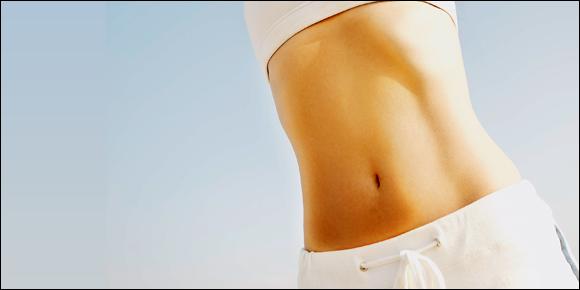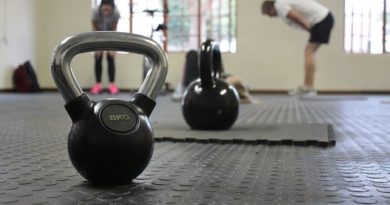Use These Unusual Techniques to Create a Tiny Waist
If you’ve read countless articles on how to get a tiny waist, you’ve likely encountered the same advice over and over. Most of it sounds good in theory, but it doesn’t always translate to real-world results.
You might even be seeing progress from a fat-burning standpoint, but the waistline you see in the mirror still isn’t what you’re hoping for.
As a certified strength coach and sports nutritionist with over two decades of experience, I can tell you that achieving a smaller waist involves more than just standard nutrition and doing your cardio. The truth is, several underlying factors are often overlooked.
This guide will give you the unusual, yet highly effective, techniques to address those factors. These are the strategies that move beyond the basics and can make a visible difference.
RELATED: BeautyFit BeautyWhey Review — Ladies, Hide Your Protein!
Disclaimer: This article is for informational purposes only and is not meant to treat or diagnose any condition. It is recommended that you speak with your doctor before starting any exercise program, changing your daily nutrition, or adding any supplements to your regimen.
Table of contents
Key Takeaways
- Control Bloating: Identify and reduce high-FODMAP foods like onions and garlic, manage sodium intake, and consider adding magnesium and Vitamin B6 to help reduce water retention.
- Improve Digestion: Slow down your eating and chew food thoroughly. Incorporate probiotic-rich foods like kefir or consider a supplement with strains like Lactobacillus acidophilus to support gut health.
- Support Organ Health: Instead of fad “detoxes,” focus on foods that naturally support your liver and kidneys. Cruciferous vegetables, turmeric, and milk thistle can aid your body’s filtration systems.
- Manage Cravings Smartly: Drink water first when you feel hungry, as thirst is often mistaken for hunger. Opt for high-protein snacks like Greek yogurt to increase satiety and prevent sugar crashes.

Unusual (But Effective) Techniques to Create a Tiny Waist
Are you ready to try some different strategies for your weight loss journey? Below are some of the best and most overlooked techniques to help you finally achieve your goal.
1. Reduce Bloating for a Tiny Waist
Often, the reason you can’t see your waistline is because you’re bloated. A 2022 study published in *Gastroenterology & Hepatology* found that about 31% of women report regular bloating. This can be hormonal, but it’s frequently caused by the food you eat.
Many common “healthy” foods can be the source of the problem. Pay close attention to foods high in FODMAPs, which are specific types of carbohydrates that can be difficult to digest for some people.
Common Causes of Bloating Include:
- High-FODMAP Foods: Onions, garlic, beans, wheat, and some fruits like apples can cause gas and bloating.
- Carbonated Beverages: The fizz in soda and sparkling water can introduce excess air into your digestive system.
- Eating Too Quickly: Swallowing excess air while eating is a frequent and preventable cause of bloating.
- High Sodium Intake: Consuming too much salt intake causes your body to retain water, which contributes to a puffy feeling.
- Lactose: Many adults have difficulty digesting dairy products, leading to discomfort.
While being in a caloric deficit is crucial for fat loss, the *types* of foods you eat are just as important for revealing your waistline. Try keeping a food journal for a week to track what you eat and how you feel afterward. This can help you pinpoint specific triggers.
To further reduce water retention, ensure your urinary function is optimal. You can do this by including more magnesium and vitamin B6 in your diet. According to a study in the *Journal of Women’s Health*, these two nutrients have been shown to help reduce symptoms of PMS, including water retention.
2. Digest Your Food Better for a Tiny Waist
Proper digestion is a non-negotiable step for a flatter midsection. For some people, the natural digestive enzymes produced by the body aren’t enough to fully break down food for absorption. This is where a little help can make a big difference.
Consider adding foods rich in probiotics, which are beneficial bacteria that support a healthy gut. A 2023 report from the National Institutes of Health highlights that probiotics can improve intestinal health and digestion. Great sources include yogurt, kefir, and kimchi.
Pro Tip: When choosing a probiotic supplement, look for one with well-researched strains like Lactobacillus acidophilus and Bifidobacterium lactis, which are known to aid digestive comfort.
Another major factor in digestion is how you eat. Eating too quickly means you’re not chewing your food enough. A 2011 study in the *American Journal of Clinical Nutrition* found that participants who chewed almonds 40 times absorbed more healthy fats than those who chewed only 10 times. Chewing is the first step of digestion, so don’t rush it. Slowing down gives your body the time it needs to properly process food and extract all the vital nutrients.
3. Support Your Body’s Natural Detoxification
Forget the trendy juice cleanses. True detoxification is about supporting the organs that do the work every day: your liver and kidneys.
Your liver is a powerhouse, filtering about 1.5 liters of blood every minute and producing bile to help you digest fats. Your kidneys filter waste and excess fluid from your body. When these systems are running efficiently, you reduce the risk of systemic inflammation, which can contribute to a bloated appearance.
You can support these vital organs through smart nutrition.
- Cruciferous Vegetables: Broccoli, cauliflower, and Brussels sprouts contain a compound called sulforaphane, which is known to support liver health.
- Turmeric: The active ingredient, curcumin, is a powerful anti-inflammatory that helps protect the liver.
- Milk Thistle: This herb is widely recognized for its liver-protective effects. Research from the World Journal of Gastroenterology confirms its use in managing liver health.
A healthy, functioning filtration system is key to reducing bloat and helping you achieve that tiny waist.
4. Manage Cravings with Hydration and Protein
It’s nearly impossible to achieve a tiny waist if you’re constantly battling cravings for sugary or unhealthy foods. These foods spike your insulin, which can effectively shut down your body’s fat-burning processes.
One of the simplest and most effective strategies is to stay hydrated. A study published in *Physiology & Behavior* found that people often misinterpret their body’s thirst signals as hunger. When you feel hungry, try drinking a full glass of water and waiting 15 minutes. If the feeling passes, you were just thirsty.
To stay on top of your hydration, consider using a tracking app like Waterllama or a smart bottle from HidrateSpark to ensure you’re getting enough fluid throughout the day.
If you’re still hungry after drinking water, reach for a high-protein snack. Protein is essential for managing hunger and promoting fat loss. A 2015 review in *The American Journal of Clinical Nutrition* confirmed that higher protein intake increases satiety, helping you feel fuller for longer. This prevents you from grabbing something that will derail your progress toward the tiny waist you desire.
FAQs About Getting a Tiny Waist
Can you spot-reduce fat from your waist?
No, this is one of the biggest myths in fitness. You cannot target fat loss from a specific area of your body. To lose fat from your waist, you need to focus on overall fat loss through a combination of a healthy diet, consistent exercise, and the supportive techniques mentioned in this article.
Are waist trainers effective for a smaller waist?
Waist trainers can provide a temporary slimming effect by compressing your midsection. However, they do not cause permanent fat loss and can even be harmful if worn too tightly or for too long, potentially restricting breathing and affecting internal organs. They are not a substitute for proper nutrition and exercise.
How long will it take to see results?
Results vary for everyone based on genetics, starting point, and consistency. If you consistently apply these strategies, you may start to notice a reduction in bloating and improved digestion within a few weeks. Visible changes in your waistline from fat loss can take several weeks to months of dedicated effort.


*Disclosure: This article may contain affiliate links or ads, which means we earn a small commission at no extra cost to you if you make a purchase through these links. These commissions help support the operation and maintenance of our website, allowing us to continue producing free valuable content. Your support is genuinely appreciated, whether you choose to use our links or not. Thank you for being a part of our community and enjoying our content.
PLEASE CONSIDER SHARING THIS ON YOUR SOCIAL MEDIA TO HELP OTHERS LEARN MORE ABOUT THIS TOPIC.





